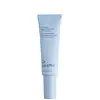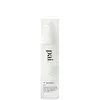What's inside
What's inside
 Key Ingredients
Key Ingredients

 Benefits
Benefits

 Concerns
Concerns

 Ingredients Side-by-side
Ingredients Side-by-side

Water
Skin ConditioningCaprylic/Capric Triglyceride
MaskingSimmondsia Chinensis Seed Oil
EmollientCetearyl Alcohol
EmollientGlycerin
HumectantDimethicone
EmollientCetearyl Glucoside
EmulsifyingPhenoxyethanol
PreservativeXanthan Gum
EmulsifyingPotassium Cetyl Phosphate
EmulsifyingCarbomer
Emulsion StabilisingCaprylyl Glycol
EmollientEthylhexylglycerin
Skin ConditioningHexylene Glycol
EmulsifyingButylene Glycol
HumectantPseudoalteromonas Ferment Extract
HumectantSodium Hydroxide
BufferingDimethylmethoxy Chromanyl Palmitate
Skin ConditioningPelargonium Graveolens Flower Oil
MaskingAnthemis Nobilis Flower Oil
MaskingLavandula Angustifolia Oil
MaskingDimethylmethoxy Chromanol
AntioxidantProline
Skin ConditioningAlanine
MaskingSerine
MaskingSodium Phosphate
BufferingTetrapeptide-21
Skin ConditioningWater, Caprylic/Capric Triglyceride, Simmondsia Chinensis Seed Oil, Cetearyl Alcohol, Glycerin, Dimethicone, Cetearyl Glucoside, Phenoxyethanol, Xanthan Gum, Potassium Cetyl Phosphate, Carbomer, Caprylyl Glycol, Ethylhexylglycerin, Hexylene Glycol, Butylene Glycol, Pseudoalteromonas Ferment Extract, Sodium Hydroxide, Dimethylmethoxy Chromanyl Palmitate, Pelargonium Graveolens Flower Oil, Anthemis Nobilis Flower Oil, Lavandula Angustifolia Oil, Dimethylmethoxy Chromanol, Proline, Alanine, Serine, Sodium Phosphate, Tetrapeptide-21
Water
Skin ConditioningPrunus Armeniaca Kernel Oil
MaskingSimmondsia Chinensis Seed Oil
EmollientCarthamus Tinctorius Seed Oil
MaskingCetearyl Alcohol
EmollientGlycerin
HumectantRosa Canina Seed Extract
EmollientButyrospermum Parkii Butter
Skin ConditioningCitrus Aurantium Dulcis Fruit Water
MaskingCetearyl Glucoside
EmulsifyingChamomilla Recutita Flower Extract
MaskingSodium Stearoyl Glutamate
CleansingRosmarinus Officinalis Leaf Extract
AntimicrobialTocopherol
AntioxidantPelargonium Graveolens Oil
MaskingSodium Levulinate
Skin ConditioningSodium Anisate
AntimicrobialLavandula Angustifolia Oil
MaskingBeta-Sitosterol
Emulsion StabilisingSodium Dehydroacetate
PreservativeSqualene
EmollientLactic Acid
BufferingWater, Prunus Armeniaca Kernel Oil, Simmondsia Chinensis Seed Oil, Carthamus Tinctorius Seed Oil, Cetearyl Alcohol, Glycerin, Rosa Canina Seed Extract, Butyrospermum Parkii Butter, Citrus Aurantium Dulcis Fruit Water, Cetearyl Glucoside, Chamomilla Recutita Flower Extract, Sodium Stearoyl Glutamate, Rosmarinus Officinalis Leaf Extract, Tocopherol, Pelargonium Graveolens Oil, Sodium Levulinate, Sodium Anisate, Lavandula Angustifolia Oil, Beta-Sitosterol, Sodium Dehydroacetate, Squalene, Lactic Acid
Ingredients Explained
These ingredients are found in both products.
Ingredients higher up in an ingredient list are typically present in a larger amount.
Cetearyl alcohol is a mixture of two fatty alcohols: cetyl alcohol and stearyl alcohol. It is mainly used as an emulsifier. Emulsifiers help prevent the separation of oils and products. Due to its composition, it can also be used to thicken a product or help create foam.
Cetearyl alcohol is an emollient. Emollients help soothe and hydrate the skin by trapping moisture.
Studies show Cetearyl alcohol is non-toxic and non-irritating. The FDA allows products labeled "alcohol-free" to have fatty alcohols.
This ingredient is usually derived from plant oils such as palm, vegetable, or coconut oils. There is debate on whether this ingredient will cause acne.
Due to the fatty acid base, this ingredient may not be Malassezia folliculitis safe.
Learn more about Cetearyl AlcoholCetearyl Glucoside is a surfactant and emulsifier. It can be produced from synthetic of natural sources of cetearyl alcohol and glucose.
Emulsifiers help prevent ingredients from separating, such as oils and waters. It can also be used to enhance the texture of products.
As a surfactant, Cetearyl Glucoside helps during the cleansing process. By gathering all the dirt and oils, it allows these molecules to be washed away easily.
Learn more about Cetearyl GlucosideGlycerin is already naturally found in your skin. It helps moisturize and protect your skin.
A study from 2016 found glycerin to be more effective as a humectant than AHAs and hyaluronic acid.
As a humectant, it helps the skin stay hydrated by pulling moisture to your skin. The low molecular weight of glycerin allows it to pull moisture into the deeper layers of your skin.
Hydrated skin improves your skin barrier; Your skin barrier helps protect against irritants and bacteria.
Glycerin has also been found to have antimicrobial and antiviral properties. Due to these properties, glycerin is often used in wound and burn treatments.
In cosmetics, glycerin is usually derived from plants such as soybean or palm. However, it can also be sourced from animals, such as tallow or animal fat.
This ingredient is organic, colorless, odorless, and non-toxic.
Glycerin is the name for this ingredient in American English. British English uses Glycerol/Glycerine.
Learn more about GlycerinLavandula Angustifolia Oil is more commonly known as lavender essential oil. It is considered a fragrancing ingredient.
Lavender imparts a famous scent. While the smell is lovely, this ingredient and may sensitize skin in topical products. This is because about 85% of the oil is made up of linalool and linalyl acetate.
When exposed to air, these two compounds become strong allergens. This ingredient exhibits cytotoxicity at low concentrations; amounts of 0.25% have been shown to damage skin cells.
A study from Japan found this ingredient caused lavender sensitivity after widespread exposure.
Lavender essential oil has some antimicrobial, antibacterial, and anti-inflammatory properties. However, the cons of this ingredient may outweight the pros.
More research is needed to confirm lavender essential oil's effects when used in aromatherapy.
Lavandula Angustifolia is known as the English Lavender and famous for creating purple fields in Provence, France.
Learn more about Lavandula Angustifolia OilThis oil comes from the seeds of the desert shrub called Jojoba. It is more commonly known as jojoba oil, a non-comedogenic oil.
Jojoba oil does not contain fragrance and has many fatty-acids, making it a great soothing ingredient.
It also contains Vitamin E, a great moisturizing ingredient. Vitamin E is also an antioxidant and protects your skin against oxidative damage.
This ingredient humectant properties, meaning it helps draw moisture from the air. This helps keep your skin hydrated.
While jojoba has antibacterial properties, it is only able to kill some strains of bacteria.
Studies also show it helps in wound healing. In fact, Indigenous cultures have used jojoba as a moisturizer and to help treat burns for centuries.
Fun fact: Jojoba oil similar to natural human skin sebum, so it has a great effect on dry skin. It is also promising with helping to regulate sebum production.
Due to its fatty acid content, Jojoba oil may not be fungal acne safe. We recommend speaking with a professional if you have any concerns.
Learn more about Simmondsia Chinensis Seed OilWater. It's the most common cosmetic ingredient of all. You'll usually see it at the top of ingredient lists, meaning that it makes up the largest part of the product.
So why is it so popular? Water most often acts as a solvent - this means that it helps dissolve other ingredients into the formulation.
You'll also recognize water as that liquid we all need to stay alive. If you see this, drink a glass of water. Stay hydrated!
Learn more about Water